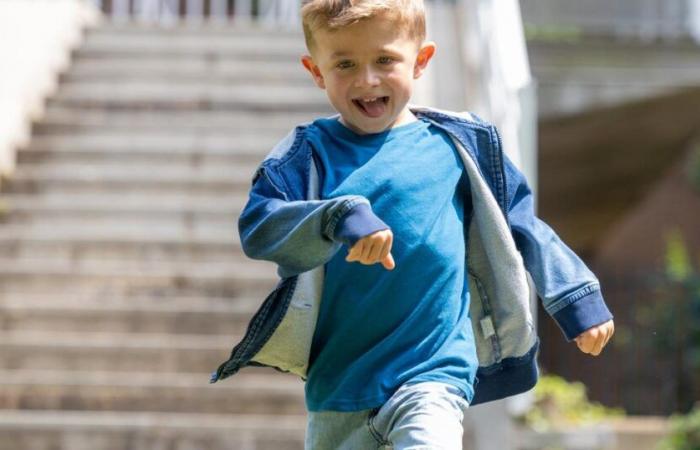Duchenne muscular dystrophy deprived him of his movements. A gene therapy from the Telethon association laboratory offers him the hope of a normal life.
In a small town near Strasbourg, Sacha's life promised to unfold like that of any child. But six years ago, everything changed for the little boy and his family. Then aged 2, Sacha was hospitalized after feeling unwell, resembling an epileptic seizure. But a blood test and then genetic analyzes finally bring a formidable diagnosis: Sacha suffers from Duchenne muscular dystrophy, a rare genetic disease which gradually weakens all the muscles, to the point of paralysis. Without treatment, the disease eventually affects the respiratory and heart muscles, leading to death before the age of 30. “It is emblematic, because she is at the origin of the creation of the AFM-Téléthon »explains Laurence Tiennot-Herment, president of the French association against myopathies during a press conference ahead of the 38e edition of the Telethon, November 29 and 30.
“During the diagnosis, everything collapses: we only have the image of the chair, the tracheotomy, the coffin”remember Sacha’s parents, Hélène and Édouard. They took steps to offer their son the best chance of stopping the progression of the disease and very quickly, the child entered a clinical study at the Strasbourg reference center. But it's really at the end of 2022 that things come to fruition: while Sacha has just celebrated his 6th birthday, he is one of the first children to benefit from gene therapy developed by Généthon, the AFM-Téléthon laboratory. . The spectacular results have made Sacha a symbol today. “He is the heir to an entire scientific research which has mobilized significant human and financial resources for more than three decades”underlines Laurence Tiennot-Herment, whose son died of Duchenne muscular dystrophy in 2003.
Also read
Telethon 2023: nearly 93 million euros collected, the best result in seven years
The principle of therapy
Up to 200 new cases of Duchenne muscular dystrophy are discovered each year in France, mainly in boys diagnosed between 2 and 3 years old. The disease is caused by a mutation in the gene that codes for a protein essential for supporting and protecting muscle fibers: dystrophin. Without this protein, muscles gradually weaken and become damaged. The lower limbs are the first affected, leading to difficulty walking and frequent falls. Then the disease spreads to the muscles of the back, upper limbs, and respiratory, cardiac and digestive organs.
The principle of all gene therapy consists of replacing defective copies of the mutated gene by inserting functional copies directly into the affected cells, here the muscle cells, using a viral vector, a virus rendered harmless to be used for the transport of “good copies” of the gene. “The problem in designing the treatment is that the dystrophy gene is the largest human gene that no viral vector could support”underlines Serge Braun, AFM-Téléthon deputy scientific director general. This is why this gene therapy is a bit special: “The alternative we found is to inject a shortened version of the dystrophin gene, called microdystrophin, which carries the essential functionalities and can be delivered by a viral vector into muscles, including the heart”explains Serge Braun. This should allow muscle cells to produce the famous protein again.
Also read
The most expensive drug in the world discovered thanks to Telethon donations
Ash walks and runs again
For Sacha, the treatment marks the start of a spectacular improvement. It took several billion vectors, but only a single injection, to see the first results. The videos shown during the conference speak for themselves. We see Sacha, 18 months after the injection, climbing the steps with ease by correctly alternating both legs, which he was incapable of doing. For his parents, it is a “tsunami of emotions”. “The improvements appeared from the 3e weekunderlines Hélène. Since then we have multiplied the victories: he now knows how to climb the slide, jump on a hopping foot but above all run”she says, very moved. However, it is too early to say that the little boy is cured and that his muscles will continue to produce the protein he was lacking.
Five other children, aged 6 to 10, were able to benefit from the treatment with encouraging results which give the green light to the launch of the “pivotal” phase. “We plan in the first quarter of 2025 to administer the therapy to 64 children in France, the United States and the United Kingdom, with the aim of commercialization by 2027-2028”announces Serge Braun. But two questions will remain to be resolved: firstly that of the cost of treatment, currently at 3 million euros. More complex, it will be necessary to find a solution for children who have already encountered the virus used as a vector, and therefore at greater risk of having an undesirable immune reaction.






